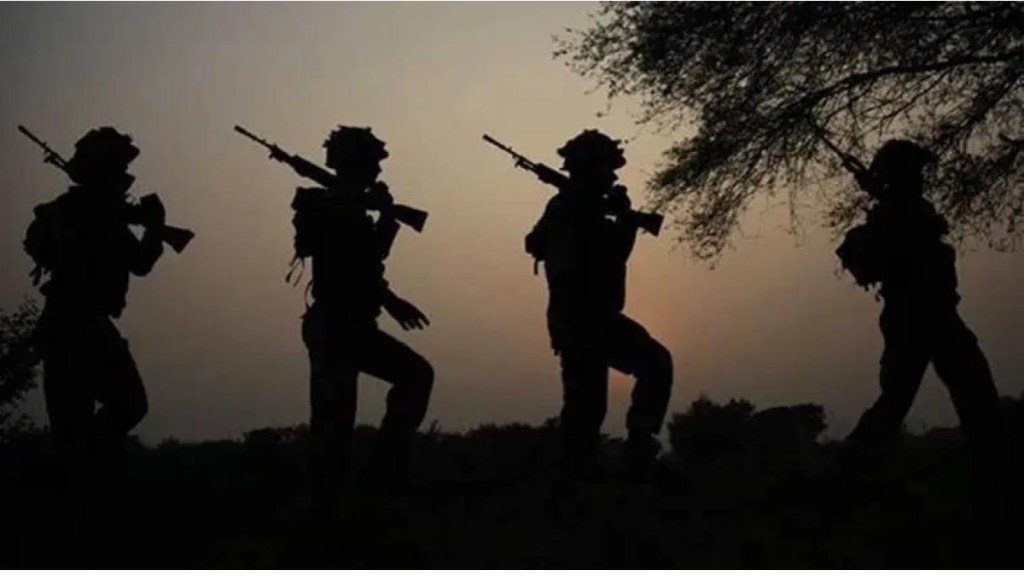India’s military is on the brink of one of its most significant reorganizations since independence, with the blueprint for new tri-service theatre commands being finalized. These theatre commands are designed to better coordinate India’s military responses to threats from China, Pakistan, and across the Indian Ocean. The concept aims to create an integrated war-fighting structure, ensuring that India’s Army, Navy, and Air Force can act in unison. The latest developments surrounding this plan were discussed at the two-day Joint Commanders’ Conference (JCC) in Lucknow, attended by senior military officers and government officials.
Theatre commands are a radical departure from India’s current military structure, which consists of 17 single-service commands (seven each for the Army and Air Force, and three for the Navy). According to sources in the defence and security establishment, “These existing commands operate with minimal inter-service coordination in terms of planning, operations, and logistics. The creation of theatre commands aims to rectify this by pooling resources and focusing efforts under unified command structures.”
Proposed Theatre Commands
“The most critical aspect of the reorganization revolves around three primary theatre commands. The Northern theatre command, based in Lucknow, will focus on threats from China along the 3,488-kilometer Line of Actual Control (LAC) that spans eastern Ladakh to Arunachal Pradesh. This command is expected to counter China’s powerful “Western Theatre Command”, which has been overseeing PLA operations on the LAC since 2016. The northern theatre command will consolidate India’s efforts by integrating existing Army and Air Force commands currently handling this region,” added sources quoted above.
To address the threat from Pakistan, the “western theatre command” will be headquartered in Jaipur. The goal is to streamline operations on the western front and enhance military readiness to face any potential threat from Pakistan.
According to sources, “The “maritime theatre command”, situated in Thiruvananthapuram, will be responsible for safeguarding India’s vast coastline and maritime interests in the Indian Ocean Region (IOR). This command will bring together elements of the Navy, Army, and Air Force to secure strategic maritime routes and deter any aggression in the IOR.”
These changes are not merely administrative. The formation of these theatre commands will require the restructuring of existing commands, with the Army giving up its South-Western Command in Jaipur and the Air Force relinquishing its Southern Air Command in Thiruvananthapuram. Additionally, the Army’s Central Command in Lucknow will be relocated to facilitate the northern theatre command. This reshuffling of resources, infrastructure, and personnel will be a critical component in realizing these integrated theatre commands.
Command Structure and Decision-Making
One of the most debated aspects of the proposed theatre commands is the rank of the officers who will lead them. The blueprint calls for theatre commanders-in-chief and a vice Chief of Defence Staff (CDS) to be four-star generals, comparable in rank to the CDS and the chiefs of the Army, Navy, and Air Force. Currently, commanders of single-service commands are senior three-star officers (Lieutenant Generals, Air Marshals, and Vice Admirals). However, integrating the Army, Navy, and Air Force under a single theatre command is expected to require a more senior officer with four-star rank to maintain authority and control across multiple branches of the military.
“There is some resistance to this idea from within the politico-bureaucratic establishment, as it would increase the number of four-star officers in India’s military hierarchy. However, proponents argue that effective command and control over all three services within a theatre would be impossible under the current three-star structure,” explained sources in the defence and security establishment.
Steps Toward Jointness and Integration
The plan to create theatre commands is part of a broader effort to enhance jointness and integration across India’s armed forces. Recently, Chief of Defence Staff General Anil Chauhan has highlighted the need for cross-service cooperation and the gradual development of a “joint culture” that will lead to seamless integration in military operations. The creation of joint logistics nodes (JLNs) is one example of this progress. These JLNs, which provide integrated logistics to all three services, have already been established in Mumbai, Guwahati, and Port Blair. Plans to create four additional nodes in Leh, Siliguri, Sulur, and Prayagraj are in advanced stages.
By sharing logistics, including ammunition, fuel, and engineering support, these nodes optimize resource usage and reduce costs. As noted in the JCC, the expansion of these logistics’ hubs will further the goal of jointness in operations. Another aspect of the integration process is the cross-posting of officers between the Army, Navy, and Air Force to promote inter-service understanding and cooperation.
International Context and Challenges
India’s move towards integrated theatre commands mirrors similar steps taken by other major military powers. China, for instance, reorganized its People’s Liberation Army (PLA) into five theatre commands in 2016 to boost its offensive capabilities and streamline command structures. The PLA’s Western Theatre Command, which oversees operations along the LAC with India, has been particularly effective in centralizing command in a vast and geographically challenging region.
For India, the creation of integrated theatre commands represents a significant leap in military modernization, but it also presents challenges. The reorganization will require a high level of coordination between the services, the government, and the political establishment. Additionally, the new command structure must be flexible enough to respond to evolving threats, particularly from China and Pakistan.

